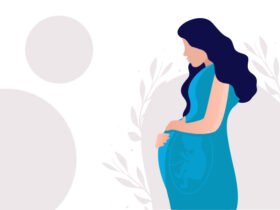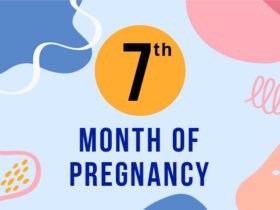What is Cholestasis?
Cholestasis is a general liver disorder also known as intrahepatic cholestasis (ICP). Cholestasis of pregnancy typically occurs in the third trimester. This condition affects nearly 6% of pregnant women worldwide and it is characterized by severe itching caused by increased levels of bile circulating in the body. It often manifests itself in the third trimester, a period in pregnancy when high levels of pregnancy hormones are circulating and they, in turn, affect bile circulation. Although it’s a pain for most women in their last trimester, it goes away a few days after delivery. Because it can cause severe discomfort and may affect the baby, it’s important for expecting mothers to be aware of symptoms for early self-diagnosis and visit a doctor for official diagnosis and medical attention.
What Are The Symptoms Of Cholestasis Of Pregnancy?
Although the intensity and extent of symptoms vary from one woman to another, there are some commonalities in symptoms. Most common symptoms include:
Intense itching in palms and hands, general extremities
Abdominal extension
Jaundice ·Nausea
Darkened urine
What Causes Cholestasis Of Pregnancy?
The major player in cholestasis of pregnancy is bile. This substance is crucial in the breaking down of fats in the body into usable fatty acids which can be absorbed in the intestines. Bile is created in the liver and stored in the gallbladder. Cholestasis affects bile production and circulation, lowering bile flow from the liver to the gallbladder where it is stored. Although the flow is decreased, production stays constant, causing an influx of bile to build up in the liver. At extremely high levels, the bile builds up disperses into the bloodstream. These increased levels of circulating bile are the cause of the intense itching. Several factors contribute to this failure in regulating bile flow, the primary reason is hormonal changes during pregnancy, specifically estrogen increase. Estrogen is said to increase cholesterol amounts in bile and cause the gallbladder to contract. Another potential reason is genetic disposition. It has been found that a mother is more at risk of developing cholestasis of pregnancy if an immediate family member has had the condition. Women with carrying multiple children are more likely to develop cholestasis of pregnancy as well as those who have previously sustained liver damage.
What Is The Effects For Cholestasis Of Pregnancy?
The development of the child is highly connected to the mother’s circulation of nutrients. Because the maternal bile produced in the liver spills over into the bloodstream, it can easily interfere with the baby’s system—seep into their own system and cause stress on the baby’s liver. Sustaining cholestasis of pregnancy increases risks of the pregnancy not being carried to term or a stillbirth.
What Is The Treatment For Cholestasis Of Pregnancy?
It is highly recommended that women who suspect they may have cholestasis of pregnancy to consult their physicians as soon as possible to begin treatment. Diagnosis for cholestasis is comprehensive, covering a complete physical examination, blood test, medical history, and an evaluation of liver function. There are available medication and supplements that can reduce the bile levels in blood and rebalance the flow of bile from the liver to the gallbladder. Topical anti-itch creams can be prescribed to ease the itch. Further, Ursodeoxycholic acid is prescribed to level the body’s bile acid concentration. Vitamin K supplements are usually given to prevent intracranial hemorrhaging during birth. Cholestasis of pregnancy is a serious condition that can affect the most critical months of pregnancy. With the right diagnosis, care, and medical treatment, however, it can be managed to ensure the baby’s health.














Leave a Reply